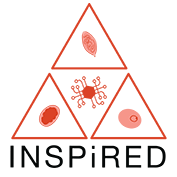Karl Heinz Tondo used the Q-Metholdology in his master thesis to explore “Stakeholder perspective on the context of use and application of a new diagnostic device for the diagnosis of schistosomiasis haematobium in Ibadan- Nigeria”. His work will contribute to WP 2 of the INSPiRED project
The abstract of his master thesis: Schistosomiasis is a Neglected Tropical Disease (NTD) that is caused by water-based parasite, putting more than 800 million people at risk. Sub-Saharan Africa accounts for approximately 93% of the world’s schistosomiasis cases with the highest prevalence is found in countries like Nigeria. Current diagnostic devices for schistosomiasis haematobium in Nigeria either demonstrates poor specificity and sensitivity, are too expensive and do not fit the local healthcare infrastructure. Also, the schistosomiasis diagnostic landscape in Nigeria involves a multiplicity of stakeholders with different diagnostic applications and strategies that are often not met by current diagnostic devices. New diagnostic device for schistosomiasis that fit the local healthcare infrastructure and supports the different stakeholder diagnostic strategies still remains a critical need. This study, therefore, focuses on; understanding the context of use and application for a new diagnostic that is needed to make a first use for the diagnosis of schistosomiasis haematobium? Q-methodology was applied within this study. Q-methodology investigates subjectivity by exploring how stakeholders rank-order opinion statements about a phenomenon. The method was used to understand; the subjective viewpoints of stakeholders on the context of use and application of new schistosomiasis diagnostic devices and how these viewpoints are shared with other stakeholders within this study. As a result, four key viewpoints (factors) on the context of use and application for a new diagnostic device for schistosomiasis haematobium in Ibadan-Nigeria we pinpointed. New diagnostic device needed for the diagnosis of schistosomiasis haematobium will either need to (i) be deployable to nearby and remote communities, (ii) provide affordable diagnostic tests at the grassroots or community level, (ii) test (diagnose) patients before treatment and equip community healthcare facilities and, (iv) fit the local healthcare infrastructure. The findings in this study will guide development of new diagnostic devices for schistosomiasis that matches the contextual landscape and stakeholder diagnostic strategies in Ibadan-Nigeria.


